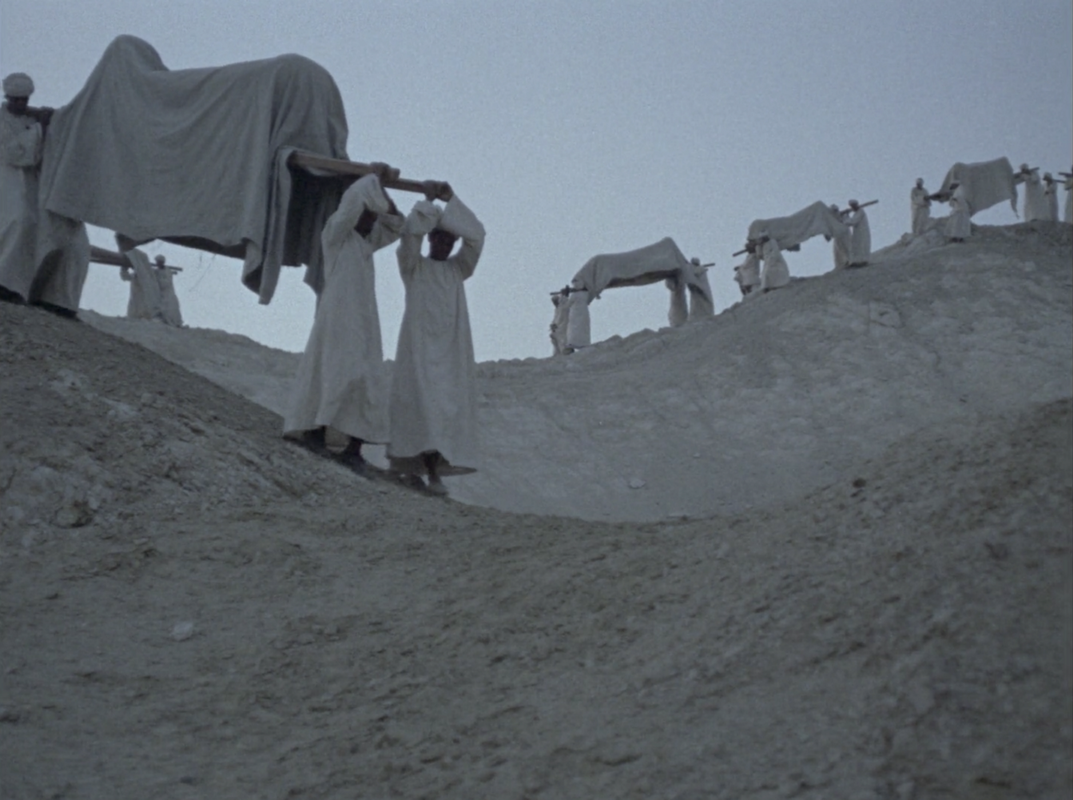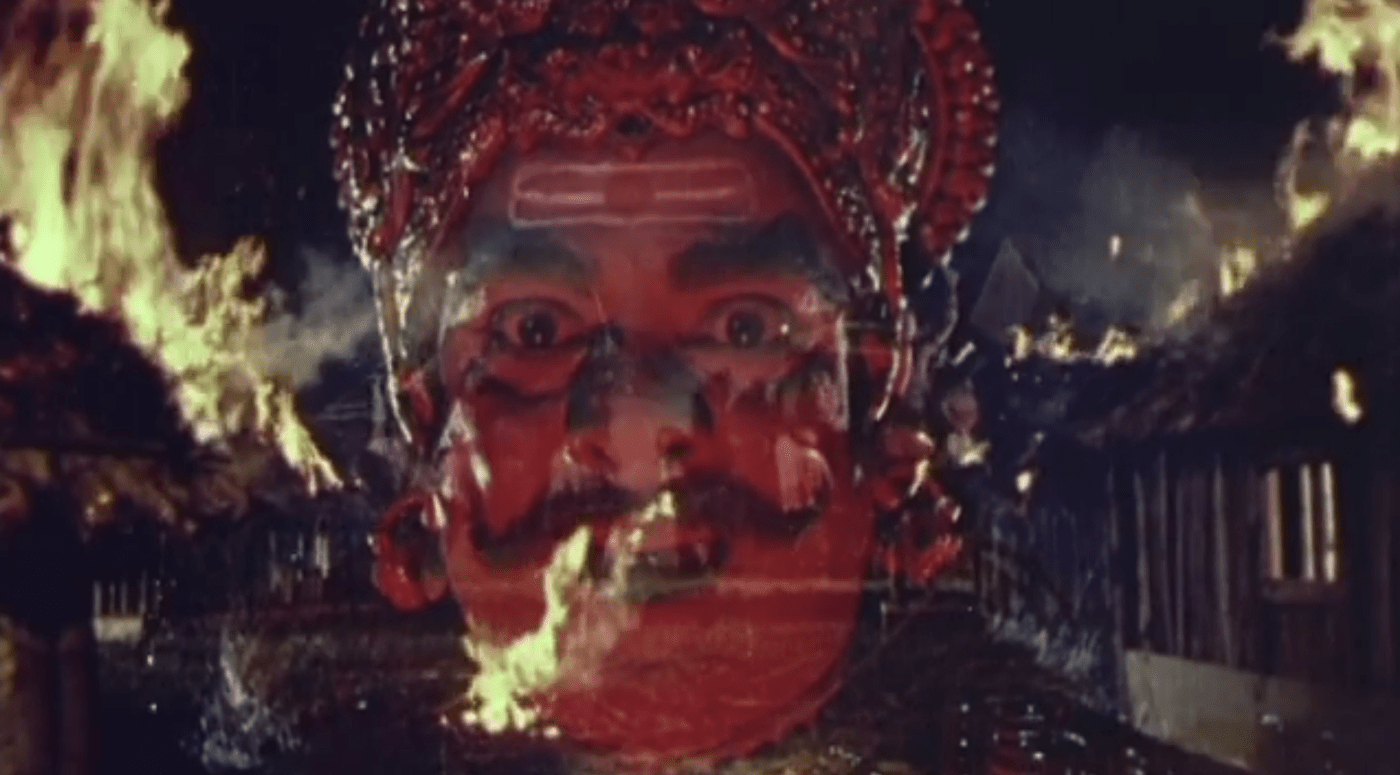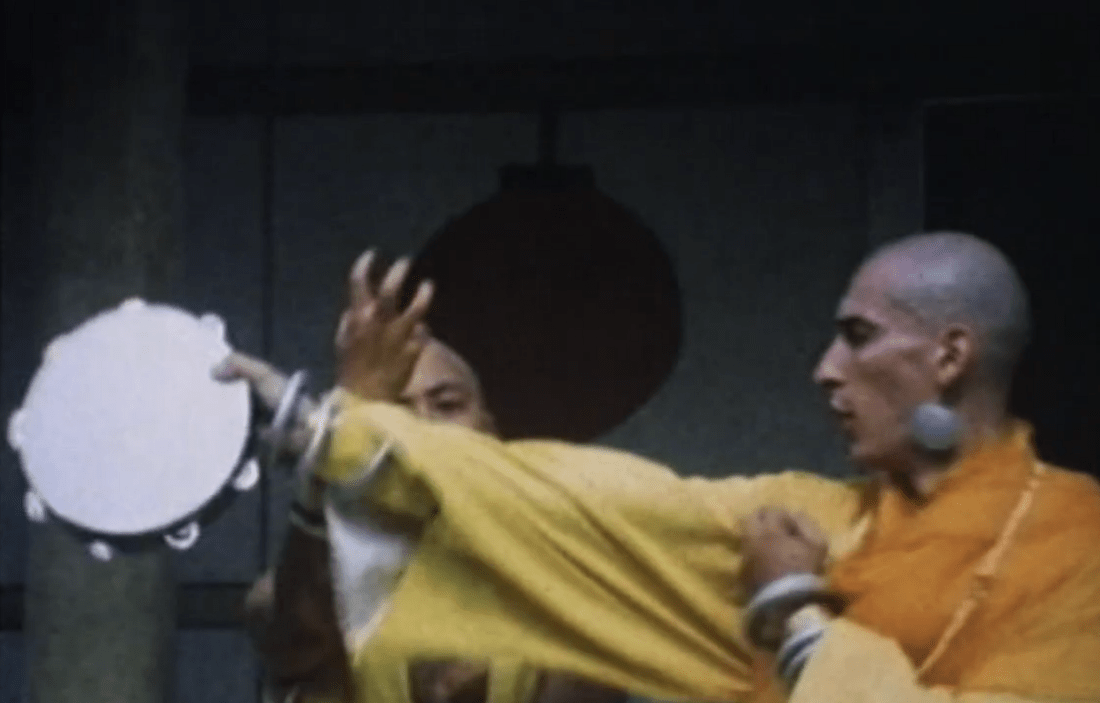
There is nothing you could change or tweak to improve Kummatty. It functions on its own terms and succeeds in producing something simple and beautiful. It is a folktale and carries with it the richness of the culture that created it. It’s a karmic parable, but it is the way it is told that makes it so compelling.
The positioning of the camera/audience sets the tone for the film. For the most part, the camera keeps its distance from the characters and action. There is often three or four-hundred feet between the viewer and what is going on. This draws our attention to the landscape, and creates a kind of sweeping, broad atmosphere. Kummatty is a Maylan film and was shot as far south as you can go in India. The landscape is flat and open with red dirt and lush green fields. The characters live in their own remote and self-contained world. They are farmers clustered around a tiny village. Everyone knows each other and together they form a tightly knit society.
India is one of the most heterogeneous countries on Earthh. Its borders have more to do with its colonial history than a shared culture. There are over 120 languages spoken amongst its 1.38 billion inhabitants. They may be referred to en masse as "Hindus", but again the word "Hindu" is a colonial construction mashing together thousands of religious practices and gods. Kummatty is filmed in one remote corner of this massive country and the camera reminds us of this. The isolation of the Maylan landscape dwarfs much of the action, providing an ever-present atmosphere for everything we see.

The camera’s distance also removes us from the action. We are more aware of being an audience, an observer. It helps to create the feeling that we are being told a folktale. Folktales are secondhand experiences mediated by a storyteller. So much depends on how the storyteller relates the story. There is very little dialogue in Kummatty, and almost none of it is expository. This is not an intimate drama, it is a parable, where each character serves a purpose.
The story unfolds without very much linking each scene. It is not hard to follow, but there is a sense of mystery as we observe the goings on. The title of the film was translated as Boogeyman, which seems like a poor choice considering what the film is about, but suffice to say, when a mysterious man wanders unexpectedly into the village, the children believe that he is somehow magical and a little frightening.
Boogeyman is a subjective term, but I picture a scary person who hides in your closet or under your bed and means you harm. Kummatty, the visitor who the film is named after, is more mysterious than dangerous. The children follow him around like the Pied Piper of Hamelin. Most of what he says is either gibberish or prayers in a mysterious language. He does occasionally speak to the children in their language, but mostly they all sing.
There is quite a bit of singing in the film. You could call it a musical, but there are no non-diagetic instruments. We just hear the children singing. The songs have abstract lyrics that evoke images, but like the film, they do not necessarily string together. The songs bring us closer to the characters without explaining everything away.

The film was made in 1979 by writer and director Govindan Aravindan. It is an example of the Malayalam Cinema named after the language spoken in the film, the language spoken in Kerala. So, you can add Mollywood to Bollywood, Tollywood, Pollywood, Lollywood and Chhollywood.

The tradition of Malayalam Cinema goes all the way back to the 1920s. Later, in the early 1960s, it was an early progenitor of new-wave film. As a movement, Malayalam had some neo-realist sympathies. It focused on simple stories about ordinary people. However, Malayalam films often featured music, as well as Hindu devotional references.
Kummatty is a beautifully told story. You can feel Aravindan’s warmth toward both the subject matter as well as the characters. It is the same warmth that is evident in Kiarostami’s Koker Trilogy. There is a sense that the director has found a special place with a look and feel all its own.

If you enjoyed this article you might also enjoy - https://filmofileshideout.com/archives/raj-kapoors-landmark-opus-awaara/



